Zoraze Ali
Calibration of the 5G-LENA System Level Simulator in 3GPP reference scenarios
May 06, 2022



Abstract:Due to the rapid technology evolution and standardization activity in the mobile communication networks, there is the need for the research community to be able to develop, test and evaluate new and/or already xisting solutions before industrial or real-network implementation. As such, it is essential to have an open-source tool that provides an alternative solution to that of industrial proprietary simulators that are not available for public usage. ns-3 5G-LENA simulator is an end-to-end open-source NR system-level simulator that allows extensive research to be performed. However, it is of great importance to guarantee that the results obtained using the simulator can be comparable to that of industrial simulators and real networks. For this reason, calibrating the simulator based on 3GPP defined specifications is crucial. Based on the above, in this paper we calibrate the ns-3 5G-LENA simulator according to the 3GPP reference results for NR-based outdoor deployments. Moreover, we explore the REM feature provided by the simulator, to ease the calibration process and understand better the radio environment. Results show the resemblance of the simulator performance to that of simulators used as references by 3GPP.
ns-3 and 5G-LENA extensions to support MIMO
Feb 08, 2022



Abstract:MIMO spatial multiplexing is an essential feature to increase the communication data rates in current and future cellular systems. Currently, the ns-3 lte module leverages an abstraction model for 2x2 MIMO with spatial multiplexing of 2 streams; while mmwave and nr modules were lacking the spatial multiplexing option until this work, since the ns-3 models were not supporting the usage of multiple antennas for spatial multiplexing and an abstraction model such as the one used in the lte module is not suitable for the mmWave frequencies. In this paper, we propose, implement and evaluate 2-stream MIMO spatial multiplexing models for ns-3 and the nr module. The proposed extension for the ns-3 supports multiple antennas for MIMO spatial multiplexing and can be used by any ns-3 module that is compatible with the ns-3 antenna array based models, such as nr and mmwave modules. We leverage this ns-3 extension to model 2-stream MIMO by exploiting dual-polarized antennas and their orthogonality under line-of-sight conditions, as it happens at high frequency bands, to send the two data streams. The proposed model does not rely on abstraction, as the MIMO model in the ns-3 lte module, and can thus model more realistically the propagation differences of the two streams, correlation, inter-stream interference, and allows design and evaluation of the rank adaptation algorithms. Additionally, we propose and evaluate an adaptive rank adaptation scheme and compare it with a fixed scheme. The developed MIMO spatial multiplexing models for the ns-3 simulator and the nr module are openly available.
On the impact of numerology in NR V2X Mode 2 with sensing and no-sensing resource selection
Jun 06, 2021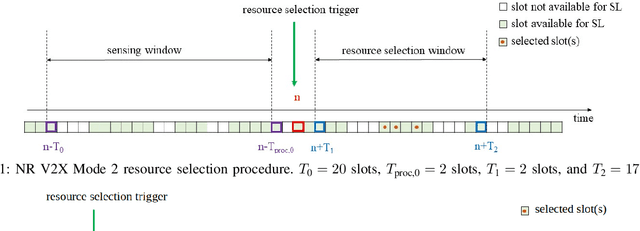

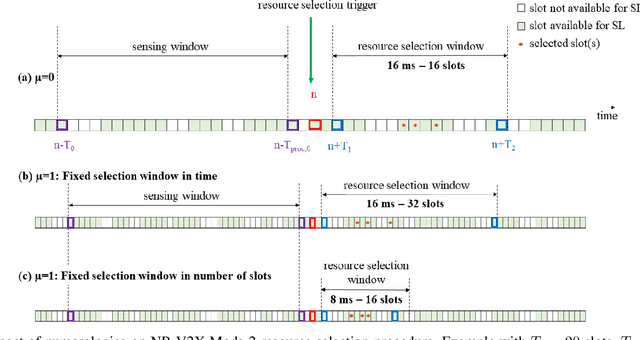

Abstract:In this paper, we use a New Radio (NR) Vehicular-to-everything (V2X) standard compliant simulator based on ns-3, to study the impact of NR numerologies on the end-to-end performance. In particular, we focus on NR V2X Mode 2, used for autonomous resource selection in out-of-coverage communications, and consider the two key procedures defined in 3GPP: sensing and non-sensing based resource selection. We pay particular attention to the interplay between the operational numerology and the resource selection window length, a key parameter of NR V2X Mode 2. The results in a standard-compliant, end-to-end simulation platform show that in all cases, for basic service messages, a higher numerology is beneficial because of different reasons, depending on the way the resource selection window length is established.
Recurrent Neural Networks for Handover Management in Next-Generation Self-Organized Networks
Jun 11, 2020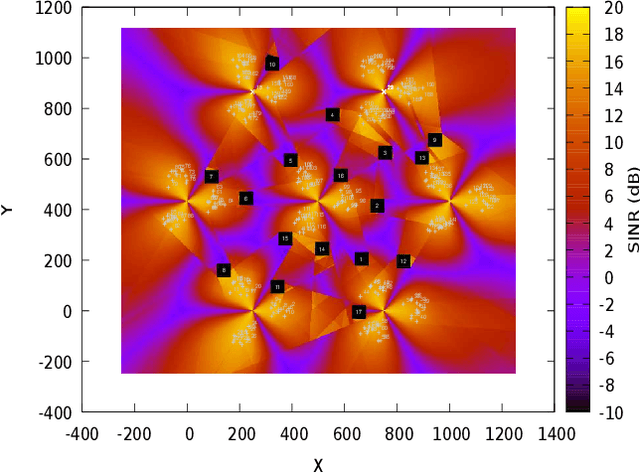
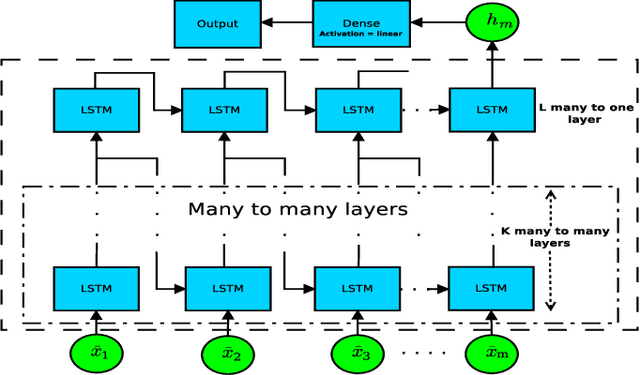
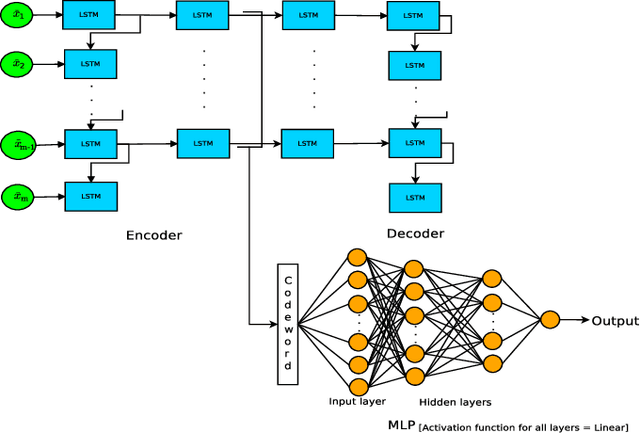
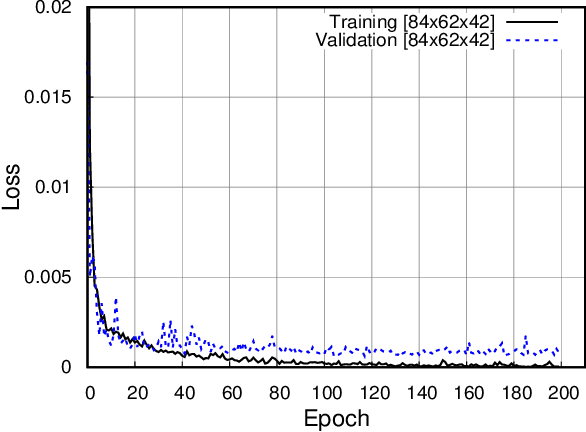
Abstract:In this paper, we discuss a handover management scheme for Next Generation Self-Organized Networks. We propose to extract experience from full protocol stack data, to make smart handover decisions in a multi-cell scenario, where users move and are challenged by deep zones of an outage. Traditional handover schemes have the drawback of taking into account only the signal strength from the serving, and the target cell, before the handover. However, we believe that the expected Quality of Experience (QoE) resulting from the decision of target cell to handover to, should be the driving principle of the handover decision. In particular, we propose two models based on multi-layer many-to-one LSTM architecture, and a multi-layer LSTM AutoEncoder (AE) in conjunction with a MultiLayer Perceptron (MLP) neural network. We show that using experience extracted from data, we can improve the number of users finalizing the download by 18%, and we can reduce the time to download, with respect to a standard event-based handover benchmark scheme. Moreover, for the sake of generalization, we test the LSTM Autoencoder in a different scenario, where it maintains its performance improvements with a slight degradation, compared to the original scenario.
 Add to Chrome
Add to Chrome Add to Firefox
Add to Firefox Add to Edge
Add to Edge